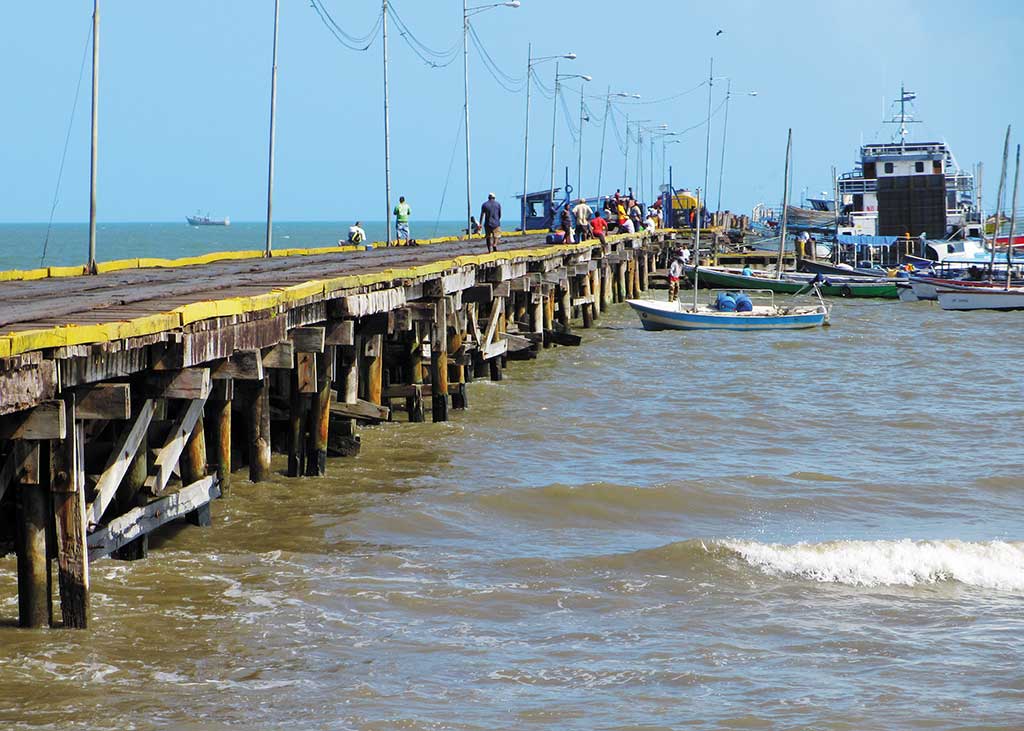Planning Your Time in Puerto Cabezas and the Río Coco
Isolated from the rest of Nicaragua by vast tracts of inaccessible forest and coastline, the municipality of Puerto Cabezas, its capital Bilwi, and the Río Coco watershed are remote and wild.
Spanish-speaking Nicaragua has always felt nationalistic about its right to alternately claim and ignore this far-off corner of the country. Managua has incited neighboring Honduras over the subtleties of the border, yet the only road to Puerto Cabezas degenerated into bumpy oblivion decades ago, making Bilwi somewhat of an island in itself. Tourism is undeveloped throughout this region, which for some travelers makes it all the more enticing.

This is far and away the most indigenous region of Nicaragua, where Miskito is heard more than Spanish. At first glance, Puerto Cabezas and the Río Coco might have the air of a drowsy backwater unchanged through the centuries. But to the contrary, the area is affected by many modern issues, including drug trafficking, global lobster prices, and international development projects.
The Río Coco is Central America’s longest river and the cultural and spiritual heart of the Miskito people, who live a traditional lifestyle on both banks of the waterway. The whole region burned white-hot during the revolution years, and the scars run deep. These days the rhythm of the days revolves around fishing and farming, as it has for centuries.
Inland, the “mining triangle” is composed of the three pueblos of Siuna, Bonanza, and La Rosita. The area no longer produces the quantity of gold or guerilla warriors it once did, but there is yet a pioneering feel to the area, which is still host to a Canadian gold mining company and a few casinos in the town of Bonanza. This area is one jumping-off point for the country’s most rugged adventure, an expedition into the sprawling and untamed Bosawás Reserve.
Planning Your Time
This region doesn’t figure prominently into many travel itineraries. Though it’s easy enough to hop a puddle jumper in Managua for an hour-long flight to Bilwi, Waspám, or the mining triangle, always plan more time than you think you’ll need when traveling in these areas. Once on land, moving between towns requires ample patience and flexibility. Plan a day or two in Bilwi and a few days to head up the coast or to nearby villages.
Bilwi (Puerto Cabezas)
Far away from everything, Puerto Cabezas (referred to as just “Puerto” or “Port”) is connected to Pacific Nicaragua only by semi-passable, seasonal roads. Most travelers fly to this outpost city from Managua. The city of Bilwi, in the department of Puerto Cabezas, is itself also known as Puerto Cabezas. It is entirely possible that you’ll be the only traveler in this town of about 50,000 inhabitants, but enough foreign volunteers and missionaries have passed through that you won’t draw too much attention.

In Bilwi, most streets are nothing more than streaks of bare red earth connecting neighborhoods of humble wooden homes set on stilts. It’s a glimpse of many worlds, with Miskitos tying wooden canoes alongside steel fishing boats at the pier. It’s an easy walk from anywhere in town to the water’s edge. Fledgling recreational beaches aren’t quite ready for tourists, and the water between them is shallow and rocky. The Mayangna inhabitants named it Bilwi because the leaves (wi) were full of snakes (Bil). These days you should worry less about serpents than the increasing drug traffic slowly impacting the social norms of the region: You are closer to trouble here than elsewhere because of that same remoteness.
Waspám
Waspám, in the far northern reaches of the Miskito pine savanna and at the edge of the mightiest river in Nicaragua, is the gateway, principal port, and economic heart of the Miskito communities that line the banks of the Río Coco. Waspám is not expecting travelers. You will find no package tours here, no one hawking T-shirts, real estate, or their new bed-and-breakfast. Rather, you will be immersed in a very traditional community that retains a strong cultural identity despite growing mestizo influence, and that is prepared to show you exactly what it is, not what it expects you are expecting.
The Miskito people live largely off the river, fishing for small freshwater species, and off their small, neatly tended fields. Their version of the tortilla is a thick, wheat-flour cake that is fried in coconut oil. Starch, including tubers like quiquisque (taro) and yucca, makes up the rest of the diet along the Río Coco. Rondón and gallo pinto are cooked in coconut milk. Wild game also finds its way onto the menu; don’t be surprised to find boar, deer, and armadillo.
The Miskito people are reserved but friendly. Once you’ve broken the ice, you’ll find them helpful and inquisitive. They’re also more conservative than other Nicaraguans. Most Miskito people speak Spanish as a second language and practically no English at all. Foreigners who speak languages other than Spanish or Miskito will inevitably be called Miriki (American). Even Nicaraguans from the Pacific region are considered foreigners.
The chance to visit this frontier—and it is truly frontier—to travel amongst the Miskito people, and to feel the spiritual power of the mighty Río Coco should not be missed.
The Mining Triangle
Throughout the mining triangle (the term refers to the towns of Siuna, Bonanza, and Rosita), roads, power supply, and water systems are unreliable, and the towns are filled with drunks and cowboys. There are cheap places to stay and eat in all three towns, and Bonanza has a working Canadian-owned gold mine and a dozen casinos. Each town has a handful of natural attractions nearby and local guides to get you there. The Bosawás reserve, to the north, is one of the largest expanses of wilderness in Central America.
Excerpted from the Sixth Edition of Moon Nicaragua.